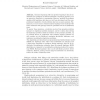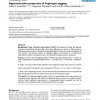177
Voted
BMCBI
2010
14 years 10 months ago
2010
Background: Genomewide association studies have resulted in a great many genomic regions that are likely to harbor disease genes. Thorough interrogation of these specific regions ...
122
Voted
WABI
2010
Springer
14 years 11 months ago
2010
Springer
Abstract. Genome sequencing will soon produce haplotype data for individuals. For pedigrees of related individuals, sequencing appears to be an attractive alternative to genotyping...
126
Voted
BMCBI
2004
15 years 26 days ago
2004
Background: In population-based studies, it is generally recognized that single nucleotide polymorphism (SNP) markers are not independent. Rather, they are carried by haplotypes, ...
127
Voted
TCBB
2008
15 years 27 days ago
2008
A Single Nucleotide Polymorphism (SNP) is a position in the genome at which two or more of the possible four nucleotides occur in a large percentage of the population. SNPs accoun...
111
click to vote
JCB
2006
15 years 29 days ago
2006
A commonly used tool in disease association studies is the search for discrepancies between the haplotype distribution in the case and control populations. In order to find this d...
102
Voted
JCB
2006
15 years 29 days ago
2006
We propose a dictionary model for haplotypes. According to the model, a haplotype is constructed by randomly concatenating haplotype segments from a given dictionary of segments. ...
BMCBI
2006
15 years 1 months ago
2006
Background: The advent of genotype data from large-scale efforts that catalog the genetic variants of different populations have given rise to new avenues for multifactorial disea...
102
click to vote
BMCBI
2006
15 years 1 months ago
2006
Background: Haplotypes extracted from human DNA can be used for gene mapping and other analysis of genetic patterns within and across populations. A fundamental problem is, howeve...
123
click to vote
BMCBI
2006
15 years 1 months ago
2006
Background: Single nucleotide polymorphisms (SNPs) are locations at which the genomic sequences of population members differ. Since these differences are known to follow patterns,...
BMCBI
2008
15 years 1 months ago
2008
Background: HLA haplotype analysis has been used in population genetics and in the investigation of disease-susceptibility locus, due to its high polymorphism. Several methods for...


